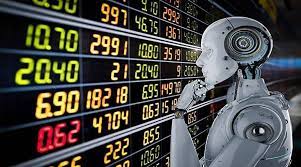In the dynamic realm of financial markets, technological advancements have continually reshaped trading landscapes. One such innovation that has garnered significant attention is the Forex robot, an automated trading system designed to execute trades in the foreign exchange (Forex) market. These robots, powered by forex robot algorithms and artificial intelligence, have swiftly gained popularity among traders seeking to capitalize on market opportunities while minimizing human error and emotional biases.
Forex robots, also known as Expert Advisors (EAs) in MetaTrader platforms, are computer programs that analyze market data, identify trading signals, and execute trades on behalf of users. They operate based on predefined criteria and trading strategies, which can range from simple rule-based approaches to complex algorithms incorporating machine learning techniques.
One of the key advantages of Forex robots is their ability to operate 24/7 without the need for constant human supervision. Unlike human traders, robots can monitor multiple currency pairs simultaneously, swiftly react to market movements, and execute trades with precision and speed, thereby capitalizing on fleeting opportunities that may elude manual traders.
Moreover, Forex robots eliminate emotional biases from trading decisions, a factor that often leads human traders to deviate from their strategies during periods of market volatility or uncertainty. By adhering strictly to predefined rules, robots help maintain discipline and consistency in trading, potentially leading to more favorable long-term outcomes.
Additionally, Forex robots can backtest trading strategies using historical data, allowing traders to assess the viability and robustness of their approaches before deploying them in live markets. This feature enables traders to refine and optimize their strategies, thereby enhancing their chances of success.
However, it is important to acknowledge that Forex robots are not infallible and carry inherent risks. While they excel at executing trades based on predefined parameters, they may struggle to adapt to sudden or unprecedented market conditions that fall outside their programmed algorithms. Moreover, over-optimization or curve-fitting during backtesting can lead to poor performance in live trading environments, as the strategies may fail to generalize to new market conditions.
Furthermore, the proliferation of Forex robots has led to concerns about the integrity of the market, particularly regarding the potential for algorithmic trading to exacerbate volatility or distort price movements. Regulators and market participants alike must remain vigilant to ensure that automated trading systems operate in a fair and transparent manner, adhering to established regulatory standards and best practices.
In conclusion, Forex robots represent a significant technological advancement in the realm of currency trading, offering traders the opportunity to automate their strategies and capitalize on market opportunities with efficiency and precision. While they are not without risks, when used judiciously and in conjunction with proper risk management protocols, Forex robots can serve as valuable tools for both novice and experienced traders alike, ushering in a new era of digital trading in the global Forex market.
